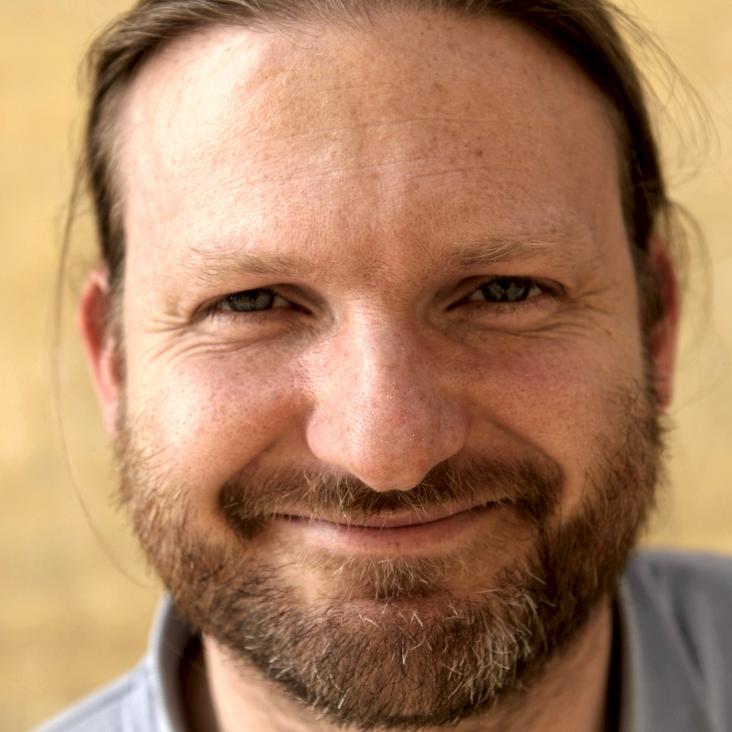Isotopic fractionation of water and its photolytic products in the atmosphere of Mars
Nature Astronomy Springer Nature 5:9 (2021) 943-950
Abstract:
The current Martian atmosphere is about five times more enriched in deuterium than Earth’s, providing direct testimony that Mars hosted vastly more water in its early youth than nowadays. Estimates of the total amount of water lost to space from the current mean D/H value depend on a rigorous appraisal of the relative escape between deuterated and non-deuterated water. Isotopic fractionation of D/H between the lower and the upper atmospheres of Mars has been assumed to be controlled by water condensation and photolysis, although their respective roles in influencing the proportions of atomic D and H populations have remained speculative. Here we report HDO and H2O profiles observed by the Atmospheric Chemistry Suite (ExoMars Trace Gas Orbiter) in orbit around Mars that, once combined with expected photolysis rates, reveal the prevalence of the perihelion season for the formation of atomic H and D at altitudes relevant for escape. In addition, while condensation-induced fractionation is the main driver of variations of D/H in water vapour, the differential photolysis of HDO and H2O is a more important factor in determining the isotopic composition of the dissociation products.Venus: key to understanding the evolution of terrestrial planets
Experimental Astronomy Springer Science and Business Media LLC (2021)
Abstract:
<jats:title>Abstract</jats:title><jats:p>In this paper, originally submitted in answer to ESA’s “Voyage 2050” call to shape the agency’s space science missions in the 2035–2050 timeframe, we emphasize the importance of a Venus exploration programme for the wider goal of understanding the diversity and evolution of habitable planets. Comparing the interior, surface, and atmosphere evolution of Earth, Mars, and Venus is essential to understanding what processes determined habitability of our own planet and Earth-like planets everywhere. This is particularly true in an era where we expect thousands, and then millions, of terrestrial exoplanets to be discovered. Earth and Mars have already dedicated exploration programmes, but our understanding of Venus, particularly of its geology and its history, lags behind. Multiple exploration vehicles will be needed to characterize Venus’ richly varied interior, surface, atmosphere and magnetosphere environments. Between now and 2050 we recommend that ESA launch at least two M-class missions to Venus (in order of priority): a geophysics-focussed orbiter (the currently proposed M5 EnVision orbiter – [1] – or equivalent); and an in situ atmospheric mission (such as the M3 EVE balloon mission – [2]). An in situ and orbital mission could be combined in a single L-class mission, as was argued in responses to the call for L2/L3 themes [3–5]. After these two missions, further priorities include a surface lander demonstrating the high-temperature technologies needed for extended surface missions; and/or a further orbiter with follow-up high-resolution surface radar imaging, and atmospheric and/or ionospheric investigations.</jats:p>Investigation of Venus Cloud Aerosol and Gas Composition Including Potential Biogenic Materials via an Aerosol-Sampling Instrument Package.
Astrobiology (2021)
Abstract:
A lightweight, low-power instrument package to measure, <i>in situ,</i> both (1) the local gaseous environment and (2) the composition and microphysical properties of attendant venusian aerosols is presented. This Aerosol-Sampling Instrument Package (ASIP) would be used to explore cloud chemical and possibly biotic processes on future aerial missions such as multiweek balloon missions and on short-duration (<1 h) probes on Venus and potentially on other cloudy worlds such as Titan, the Ice Giants, and Saturn. A quadrupole ion-trap mass spectrometer (QITMS; Madzunkov and Nikolić, <i>J Am Soc Mass Spectrom</i> 25:1841-1852, 2014) fed alternately by (1) an aerosol separator that injects only aerosols into a vaporizer and mass spectrometer and (2) the pure aerosol-filtered atmosphere, achieves the compositional measurements. Aerosols vaporized <600°C are measured over atomic mass ranges from 2 to 300 AMU at <0.02 AMU resolution, sufficient to measure trace materials, their isotopic ratios, and potential biogenic materials embedded within H<sub>2</sub>SO<sub>4</sub> aerosols, to better than 20% in <300 s for H<sub>2</sub>SO<sub>4</sub> -relative abundances of 2 × 10<sup>-9</sup>. An integrated lightweight, compact nephelometer/particle-counter determines the number density and particle sizes of the sampled aerosols.Upper limits for phosphine (PH3) in the atmosphere of Mars
Astronomy and Astrophysics EDP Sciences 649:May 2021 (2021) L1
Abstract:
Phosphine (PH3) is proposed to be a possible biomarker in planetary atmospheres and has been claimed to have been observed in the atmosphere of Venus, sparking interest in the habitability of Venus’s atmosphere. Observations of another biomarker, methane (CH4), have been reported several times in the atmosphere of Mars, hinting at the possibility of a past or present biosphere. The Atmospheric Chemistry Suite on the ExoMars Trace Gas Orbiter has a spectral range that includes several absorption lines of PH3 with line strengths comparable to previously observed CH4 lines. The signature of PH3 was not observed in the 192 observations made over a full Martian year of observations, and here we report upper limits of 0.1–0.6 ppbv.Seasonal reappearance of HCl in the atmosphere of Mars during the Mars year 35 dusty season
Astronomy and Astrophysics EDP Sciences 647:March 2021 (2021) A161


